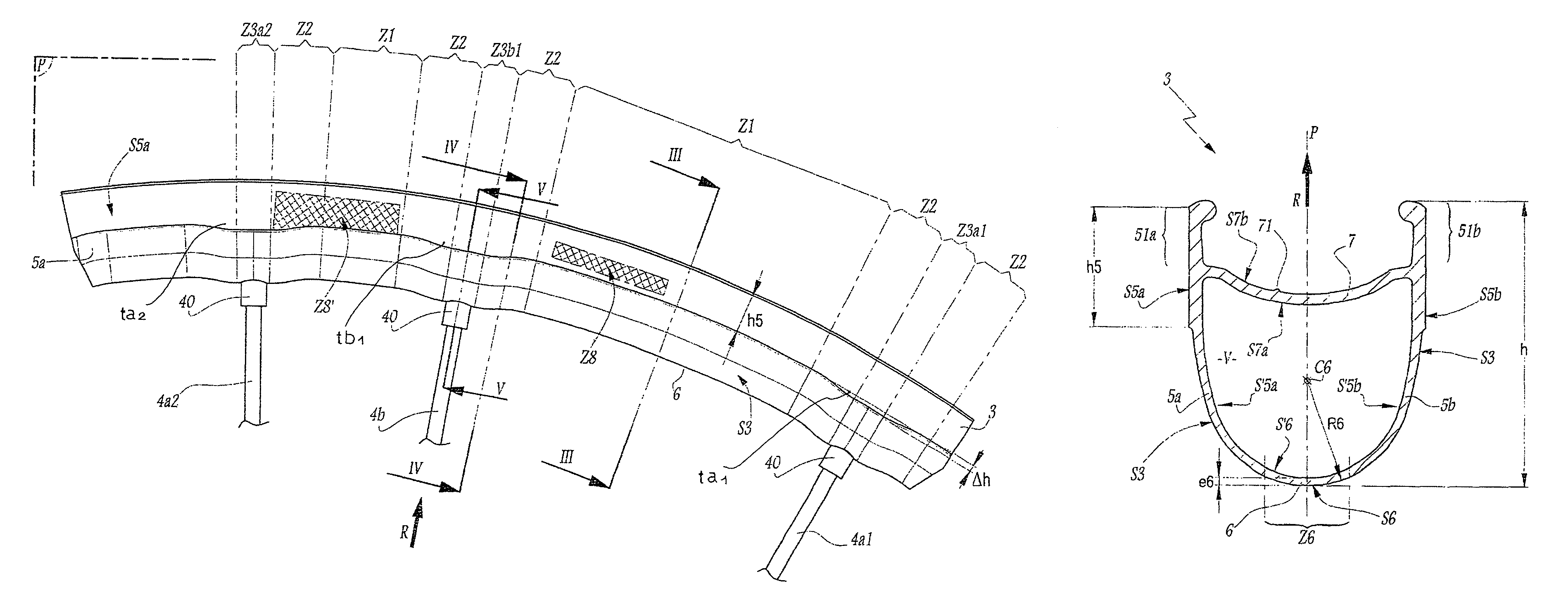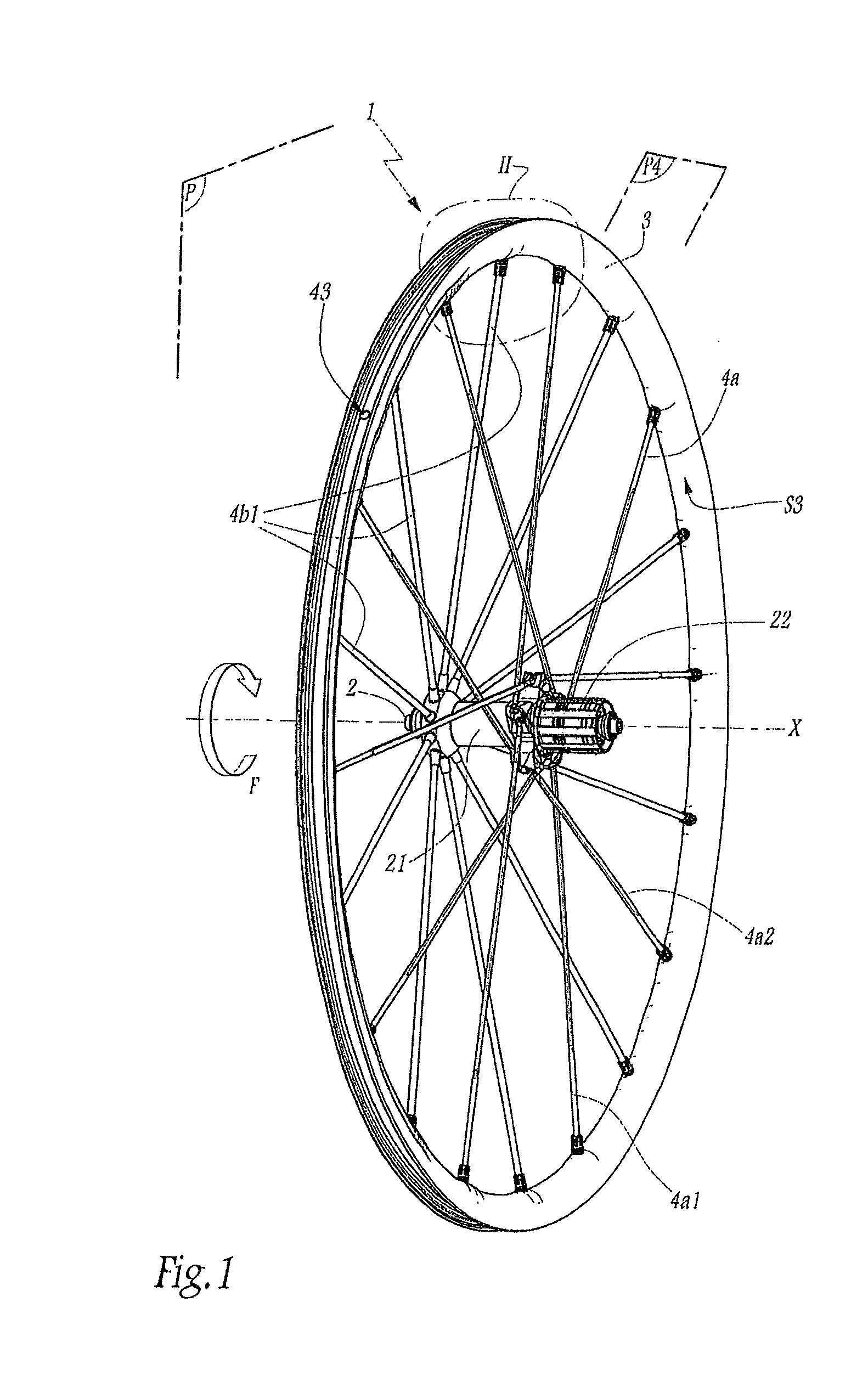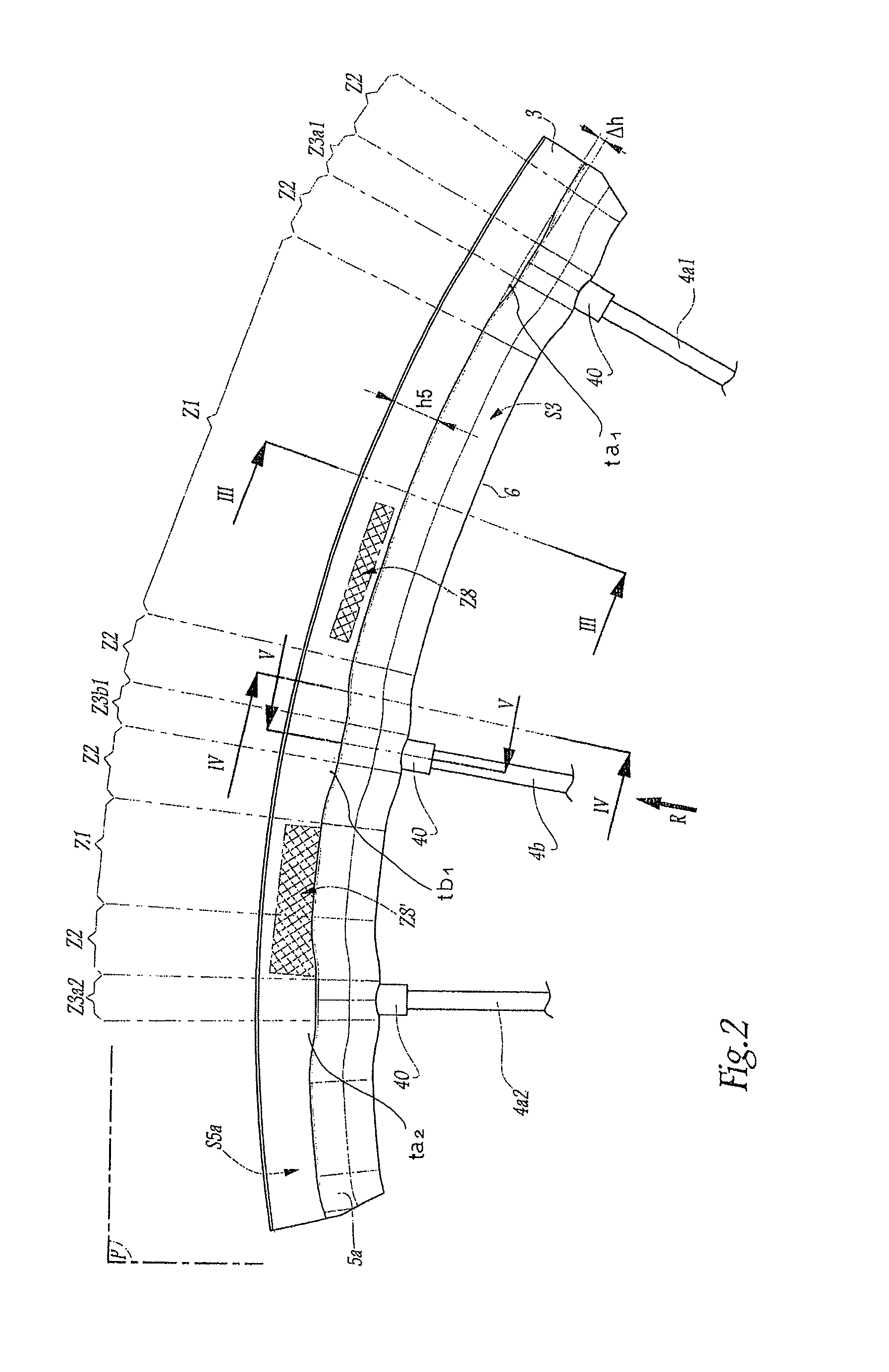Cycle wheel rim and method of manufacture
a cycle wheel and rim technology, applied in the direction of bicycles, mechanical equipment, transportation and packaging, etc., can solve the problems of reducing the thickness of the rim, breaking the extrusion die, and significant plastic deformation, so as to reduce the weight of the rim, improve rigidity, and manufacture quickly
- Summary
- Abstract
- Description
- Claims
- Application Information
AI Technical Summary
Benefits of technology
Problems solved by technology
Method used
Image
Examples
Embodiment Construction
[0057]FIG. 1 shows a bicycle rear wheel 1, without a tire mounted thereon. The wheel 1 comprises two sets 4a, 4b of spokes 4a1, 4a2, 4b1 mounted on a rim 3. The spoke sets 4a, 4b are connected to a hub 2 of the wheel 1, which comprises a hub body 21 extending along an axis of rotation X of the wheel 1. A freewheel mechanism 22 is connected to one end of the hub body 21 which supports the spoke set 4a, and the other end of the hub body 21 supports the spoke set 4b. The freewheel mechanism 22 is provided to be assembled with a sprocket cassette (not shown).
[0058]When a cyclist pedals in the forward direction, the cyclist rotates the wheel 1 about the axis of rotation X through the sprocket cassette and the freewheel mechanism 22 in a direction designated by the arrow F in FIG. 1.
[0059]The spoke set 4a comprises driving spokes 4a2, which pull on the rim 3 when the cyclist pedals, and non-driving spokes 4a1, or pushing spokes, which tend to relax when the cyclist pedals. The spoke set 4...
PUM
| Property | Measurement | Unit |
|---|---|---|
| thickness | aaaaa | aaaaa |
| thicknesses | aaaaa | aaaaa |
| thickness | aaaaa | aaaaa |
Abstract
Description
Claims
Application Information
 Login to View More
Login to View More - R&D
- Intellectual Property
- Life Sciences
- Materials
- Tech Scout
- Unparalleled Data Quality
- Higher Quality Content
- 60% Fewer Hallucinations
Browse by: Latest US Patents, China's latest patents, Technical Efficacy Thesaurus, Application Domain, Technology Topic, Popular Technical Reports.
© 2025 PatSnap. All rights reserved.Legal|Privacy policy|Modern Slavery Act Transparency Statement|Sitemap|About US| Contact US: help@patsnap.com



